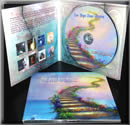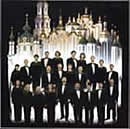Two Steps From Heaven

Classical Crossover

Sacred Choral Music
by Kiev Chamber Choir

Video:
Ukrainian Folk Music
Free Dog Clipart

Classical Crossover

Sacred Choral Music
by Kiev Chamber Choir

Video:
Ukrainian Folk Music
Free Dog Clipart
Russian Orthodox Church Sacred Choral Music on Amazon
ALL ABOUT
AVE MARIA LYRICS
Celine Dion: What Does She Sing?
MOBILE WEBSITE
 DOWNLOAD THIS SONG FOR FREE You won't find this song anywhere on the Internet. CHAPTER 4 : How to record in your home studio Acoustic Guitar Electric Guitar Bass Guitar Piano Brass & Reed Instruments Vocals Drum Kit Electric Guitar Before recording an electric guitar, you first have to get a tone in the studio that everyone can live with. We’ll assume that you’re not going direct to tape (or disc), though that is a viable option. Amp emulators are very useful and sometimes necessary in a home studio environment, but we’ll address the prospect of recording a live amp in the studio. A guitarist’s go-to sound will often include a maxed out amp at serious volume levels, but that might not be a possibility for the studio environment, which means you need to be able to get a tone both the guitar player and the engineer can love at a workable volume. Take the extra time to do some source monitoring - listening back to the recorded tone to make sure what you have on record matches everyone’s expectations. Miking a guitar amp is simple enough, though there are many variations to consider. Finding the sweet spot, just as you would for an acoustic instrument, requires varying your distance and spot relative to the speaker. Don’t point the microphone directly at the cone; you need it at a slight angle to aim it at the sound source. From there it’s about slight adjustments to the angle, placement, and distance. When it comes to mic choice, dynamic mics are the overwhelming recommendation, mostly as the tone of an electric guitar, across most any genre or style of play, comes down to the mids. The reason why guitarists predominantly use 12-inch speakerscomes down to balance. A 12-inch speaker does not have lots of highs or lows. It’s the middle, the crunch, the bite. That’s why I tend to use dynamic mics on amps. If you use an expensive large or small diaphragm condenser that has lots of high- and low-end extension, you’re collecting sound that’s not going to benefit you but that you’ll have to deal with when you mix. "A dynamic microphone close up on the paper cone gets me the results I want. If I want to add a second mic, I’ll put it elsewhere in the room, sometimes faced away from the cab. That allows me to pick up the ambient tonality of the amplifier driving the acoustics of the room.” VOCAL TUNING AND PITCH CORRECTION All singers know that usually vocal studio recording has pitch issues. However, vocal pitch correction will help fix flat or sharp notes and clean up your vocals. Click here if you feel you have some problems with your vocal tracks |
HOW TO MAKE HOME
|
DOWNLOAD THIS SONG FOR FREE
You won't find this song anywhere on the Internet.
HOW TO MAKE HOME RECORDING STUDIO